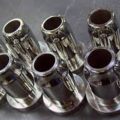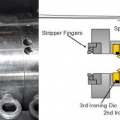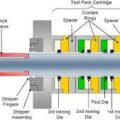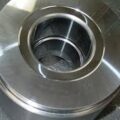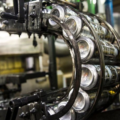Introduction:
The Toolpack is an essential component in the can-making industry, playing a critical role in the process of shaping and forming cans. As a key element in the production line, it is crucial to understand its features, functions, and potential defects to ensure the highest quality of cans. In this article, we will dive into the intricacies of the Toolpack, exploring its design, operation, and potential issues.
Design and components:
The Toolpack is a complex assembly of various components, each with its specific function in the can-making process. While the design of the Toolpack may vary depending on the manufacturer and specific application, some common elements include:
Die: The die is the central component of the Toolpack, responsible for shaping the can’s body. It is designed to withstand high pressure and force during the forming process, ensuring the can maintains its desired shape and dimensions.
Punch: The punch works in tandem with the die, applying force to the can’s material to form it into the desired shape. The punch is typically made of high-quality steel to withstand the repeated impact and wear during the can-making process.
Rubber Springs: Modern Toolpack designs often incorporate rubber springs instead of traditional steel coil springs. Rubber springs help dampen vibrations and prevent die marks on the thin wall portion of the can, resulting in better, brighter cans.
Guides and Bearings: These components ensure the smooth and precise movement of the Toolpack during the can-making process. They are designed to minimize friction and wear, ensuring consistent performance and prolonging the life of the Toolpack.
Operation:
The Toolpack operates in a series of coordinated steps to form the can’s body. The process typically begins with a flat sheet of metal, which is fed into the can-making machine. he Toolpack then performs the following steps:
Cutting: The metal sheet is cut into a precise shape, which will eventually form the can’s body.
Drawing: The punch and die work together to draw the metal into the desired shape, forming the can’s body. This process requires significant force and precision to ensure the can maintains its intended dimensions.
Trimming: Any excess material is trimmed away, leaving a clean, finished edge on the can’s body.
Inspection: The finished can is inspected for any defects, such as die marks or deformations, before being approved for further processing or packaging.
Potential defects:
Although the Toolpack is designed for high precision and reliability, there are potential defects that can occur during the can-making process. Some of these defects may include:
Die Marks: Die marks are unwanted indentations or scratches on the can’s surface, which can result from excessive vibrations or improper alignment of the Toolpack components.
Deformations: Deformations can occur if the punch and die do not apply the correct force or if the metal material is not of the appropriate quality. This can result in cans with irregular shapes or dimensions.
Excessive Wear: The Toolpack components, particularly the punch and die, can experience wear over time due to the high forces and repetitive nature of the can-making process. This can lead to a decrease in precision and quality of the finished cans.
Conclusion:
The Toolpack is a vital component in the can-making industry, responsible for shaping and forming cans with precision and reliability. Understanding its design, operation, and potential defects is essential for maintaining high-quality production and ensuring the longevity of the Toolpack. By staying informed and vigilant about potential issues, manufacturers can minimize defects and optimize the performance of their Toolpacks, resulting in better, brighter cans for consumers.



